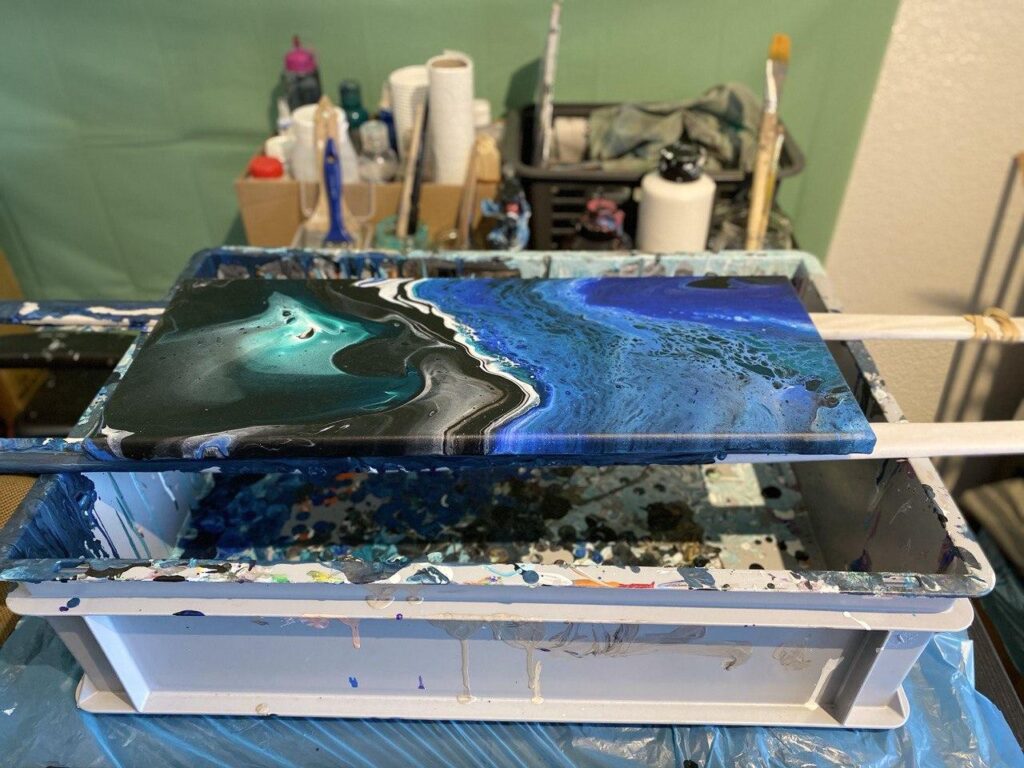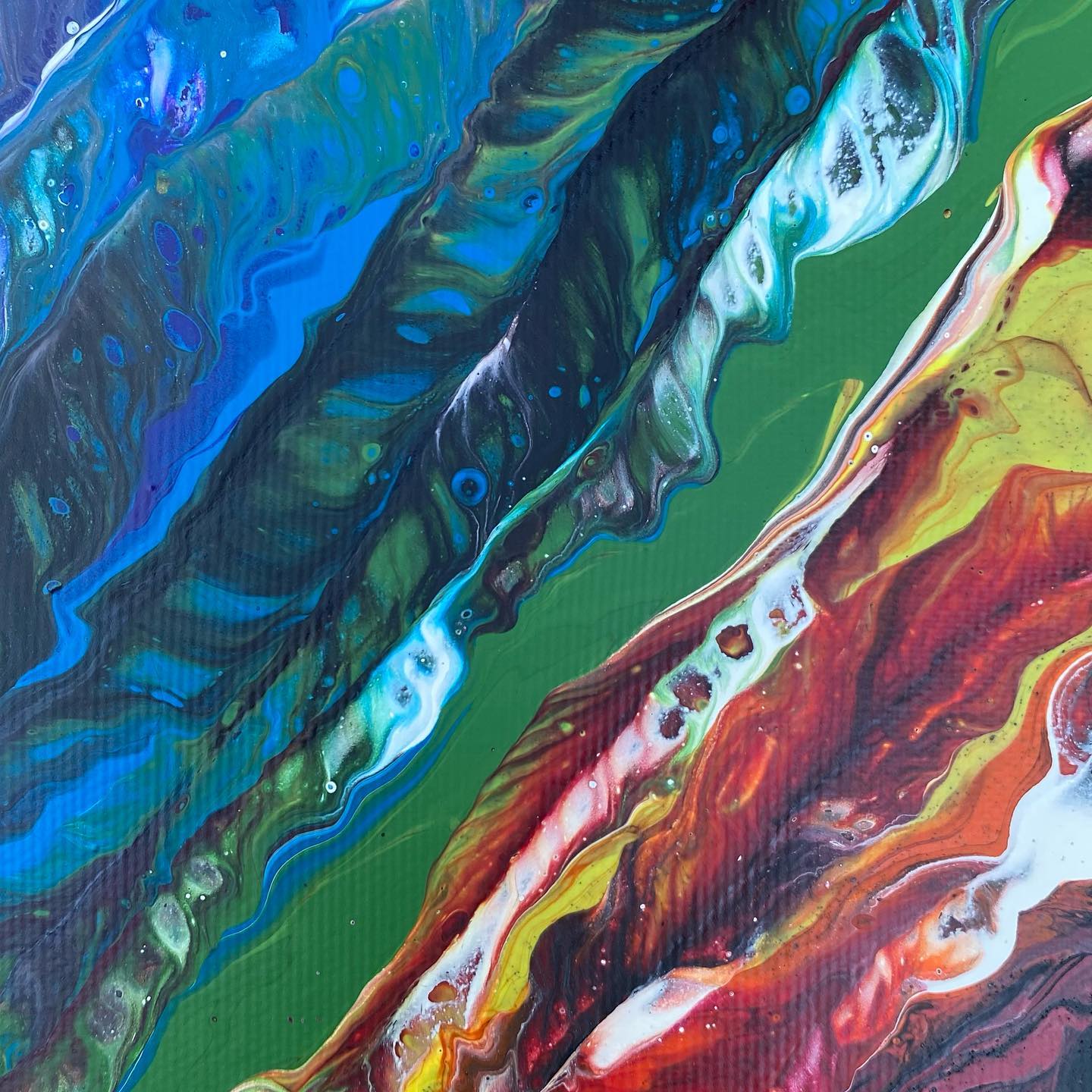Acrylic pouring is an experimental technique in which acrylic paint is mixed with pouring medium and water, and then poured onto a canvas, resulting in creative and abstract patterns. In this article you will find six acrylic pouring essentials and here I purchased these items.
1. Acrylic Paints
As the name “Acrylic Pouring” suggests, you’ll need acrylic paints to apply the pouring technique. I recommend using acrylic paint with medium consistency, as it can be mixed with water and pouring medium more easily. To get started, I highly recommend Acryl Studio by Boesner. It offers a great price-performance ratio, but any acrylic paint will work.
2. Pouring Medium and Water
Acrylic paint has a fairly thick consistency. In order to pour the paint, you need to mix it with pouring medium and some water. The ratio of paint to pouring medium depends on the consistency of the paint and the pouring medium. I always try to achieve a consistency similar to warm honey. The paint should not be too watery or too thick.
What is pouring medium, you might ask?
Pouring medium is a liquid pouring medium that contains binders. When mixed with acrylic paints, it increases the flow of the paint while keeping the color particles together. It is an additive that enhances the flow properties of acrylic paint. Compared to plain water, pouring medium helps prevent the paint from cracking during drying.
pouring-medium.ch
When purchasing, it is important to make sure that the pouring medium does not yellow. A good and affordable choice is the Pouring Medium by Boesner. I have been using this one and I am very satisfied with the price-performance ratio. Many artists from around the world also swear by Floetrol, although it may be more difficult to find in Switzerland.
3. Canvas
Of course, you also need a canvas or, more precisely, a painting surface to start acrylic pouring. In addition to canvases, you can also pour on painting boards, wooden panels, furniture, Christmas ornaments, and much more. However, I recommend starting with a traditional canvas or painting board. This will give you a feel for the pouring technique.
You can actually buy canvases in any store that sells art supplies. I bought my first canvases at Coop Bau&Hobby. Currently, I also have the Rafaelo canvases from Zumstein at my home. I think a good size to start with is 18x24cm or 20x20cm if you prefer square images.
4. Level Surface
The paint will flow off the canvas as you tilt it, as you may have seen in videos. So, you definitely need a level working surface and plastic sheeting to cover the area. If you are unsure whether the surface is level, also place the plastic sheeting on the floor. It is best to buy a level to ensure the canvas is even.
I now use a box and two flat wooden sticks that I bought at Obi. You can also use a larger cardboard box instead of buying a box. When the paint dries, the canvas may stick to the surface. To prevent this, you can insert a thumbtack (e.g., from Galaxus) into each corner of the canvas.

5. Cups & Wooden Spatulas
To mix the individual colors with the pouring medium and water, you need a cup. Plastic cups were often used in the past, but they are now banned in Switzerland. You can find disposable cardboard cups at places like Migros that serve the purpose. Alternatively, you can also use old pickle jars or jam jars. When the leftover acrylic paint dries in them, you can simply peel off the paint layer.
What do you need the wooden spatula for? Well, to mix the paint. Wooden spatulas are flat wooden sticks, here is an example from Gerstaecker. I recommend using a wooden spatula for each cup to prevent the colors from mixing together.
6. Gloves and Clothing
It’s best to wear “painting clothes” that you only wear for painting because acrylic paint stains are not easy to remove from clothing. For wet acrylic paint, vinegar or dish soap can help. If the paint has dried, you’ll need isopropyl alcohol, acetone, or mineral spirits to remove the paint.
Acrylic paint also sticks quite well to hands. Since you’ll be holding the canvas in your hands during acrylic pouring, the paint will flow over your hands. Therefore, I recommend using disposable gloves. You can find them anywhere cleaning supplies are sold.
Now you can start acrylic pouring! .

